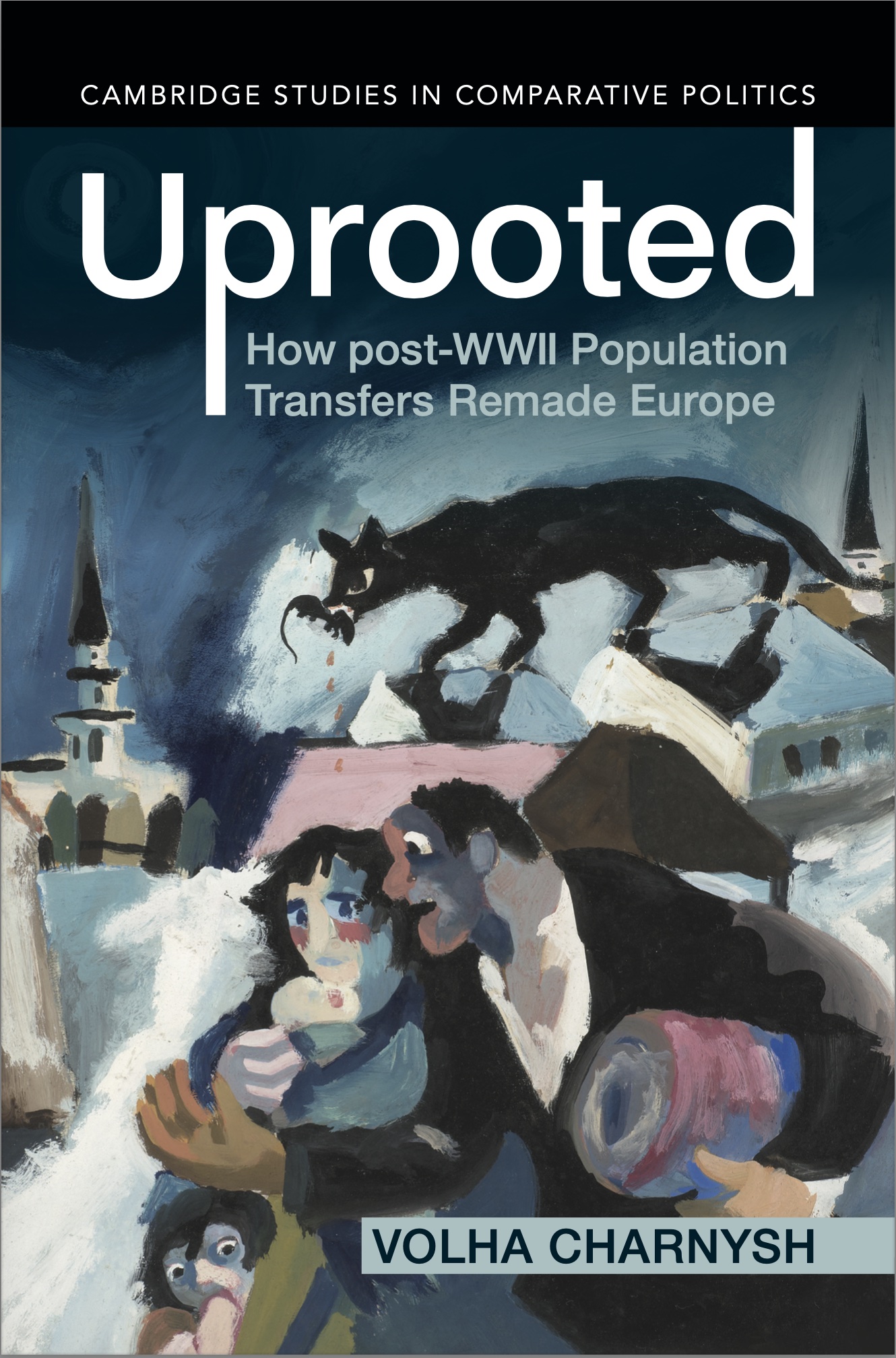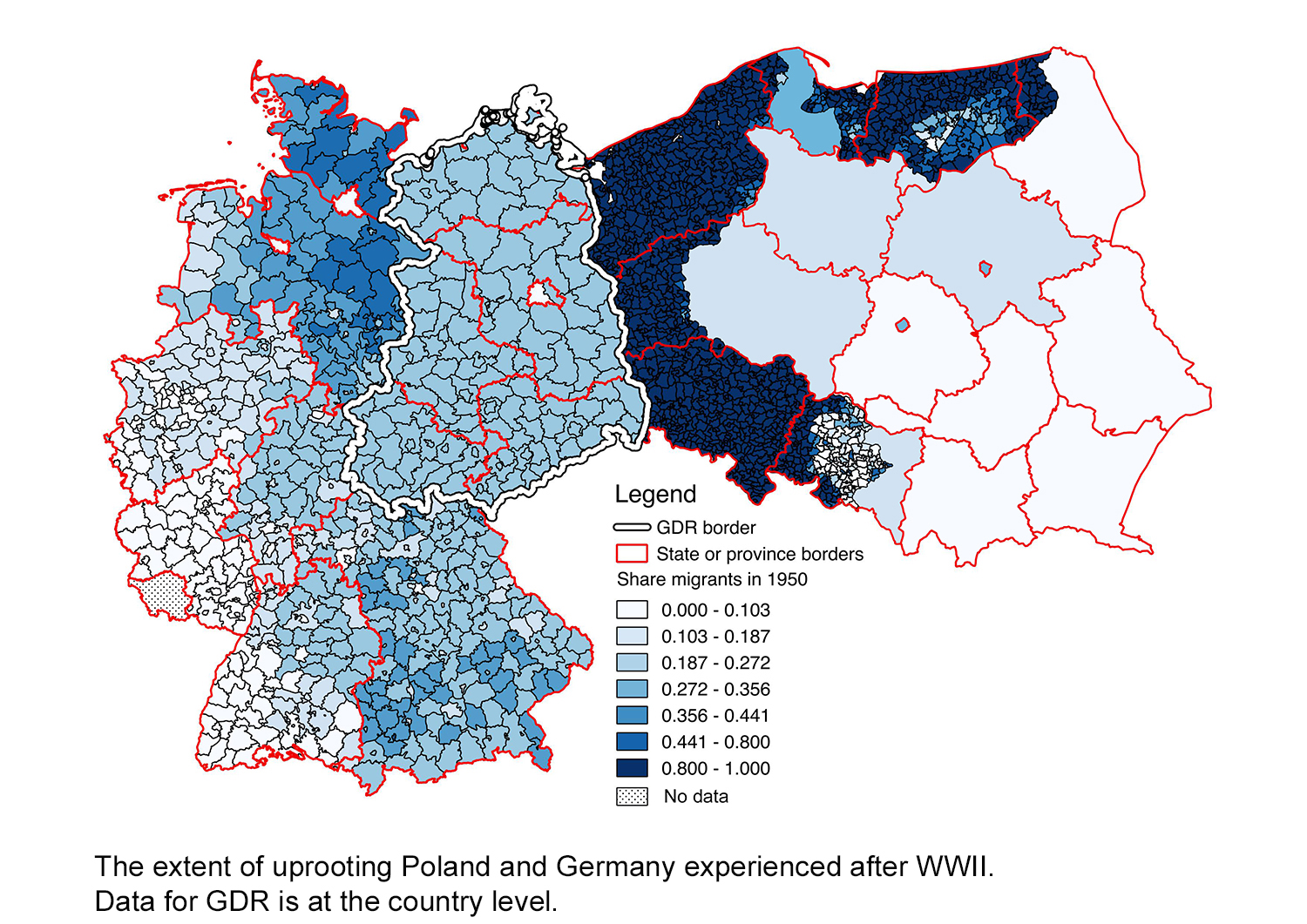Uprooted: How post-WWII Population Transfers Remade Europe
2025. Cambridge University Press, Studies in Comparative Politics. Buy on Amazon.
WWII and its aftermath precipitated the largest episode of forced migration in history. In 1944-51, nearly 20 million people, including 12 million Germans and 5 million Poles, were uprooted from their homes and resettled elsewhere. The book asks how the uprooted populations formed ties to their new states and societies and why some localities that received postwar refugees are economically better off than others today.
Using novel statistical and narrative evidence from Poland and West Germany, the book traces the trajectory of social and economic development in refugee-receiving communities over more than half a century. It demonstrates that although forced displacement undermined societal cohesion and public goods provision in the short term, it strengthened state institutions and increased administrative capacity over time. I further show that communities that had received a larger and more heterogeneous migrant population achieved higher levels of entrepreneurship, education, and incomes in a span of 2-3 generations. Counterintuitively, mass displacement – an undeniably traumatic experience for the affected individuals – creates opportunities for building stronger states and more prosperous societies.
The book challenges the dominant view that forced migration is detrimental to the institutional development and economic performance of receiving societies. I show on the contrary that the effects of displacement vary in direction and magnitude over time and are conditional on the nature of state institutions. Notwithstanding important short-term costs, accommodating refugees provides states with an opportunity to strengthen their institutions and improve economic performance. Second, the book contributes to research on war and state building by highlighting that mass uprooting can facilitate state development by increasing the demand for state-provided collective goods among the affected population. This is a novel mechanism that canonical bellicist accounts have not yet considered. Third, the book challenges the large literature on the socio-economic costs of cultural heterogeneity in two ways. On the one hand, it shows that cultural similarity between refugees and natives does not guarantee peaceful coexistence because migration creates new cleavages that undermine informal cooperation in the short run. On the other hand, it highlights that greater diversity in migrants’ origins contributes to higher entrepreneurship rates and income levels in receiving communities.
The book received the 2025 APSA Merze Tate – Elinor Ostrom Outstanding Book Award, 2025 APSA William Riker Prize for Best Book in Political Economy, and the 2025 APSA European Politics and Society Section Best Book Award, and was shortlisted for the 2025 APSA Comparative Politics Section Luebbert Best Book Award.

